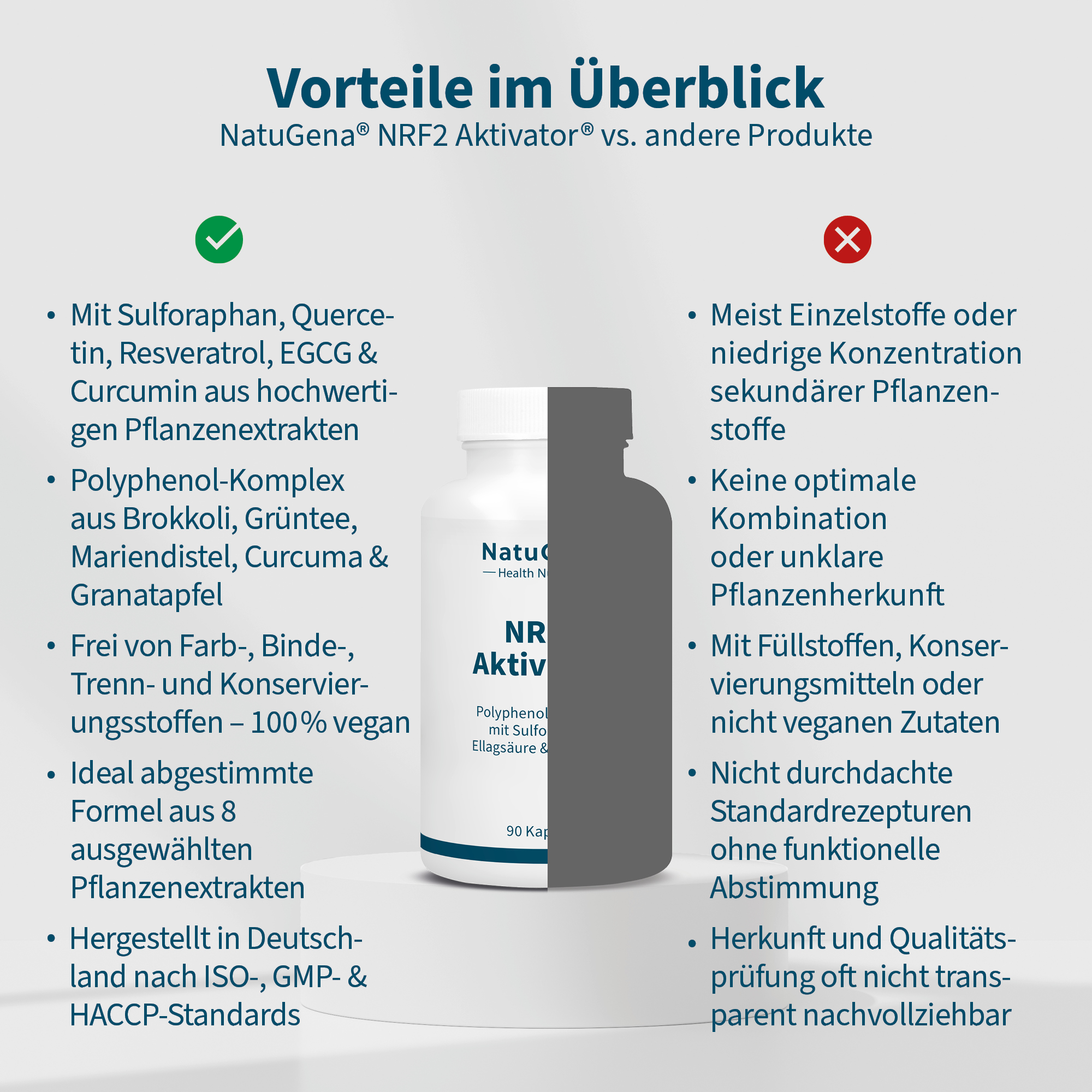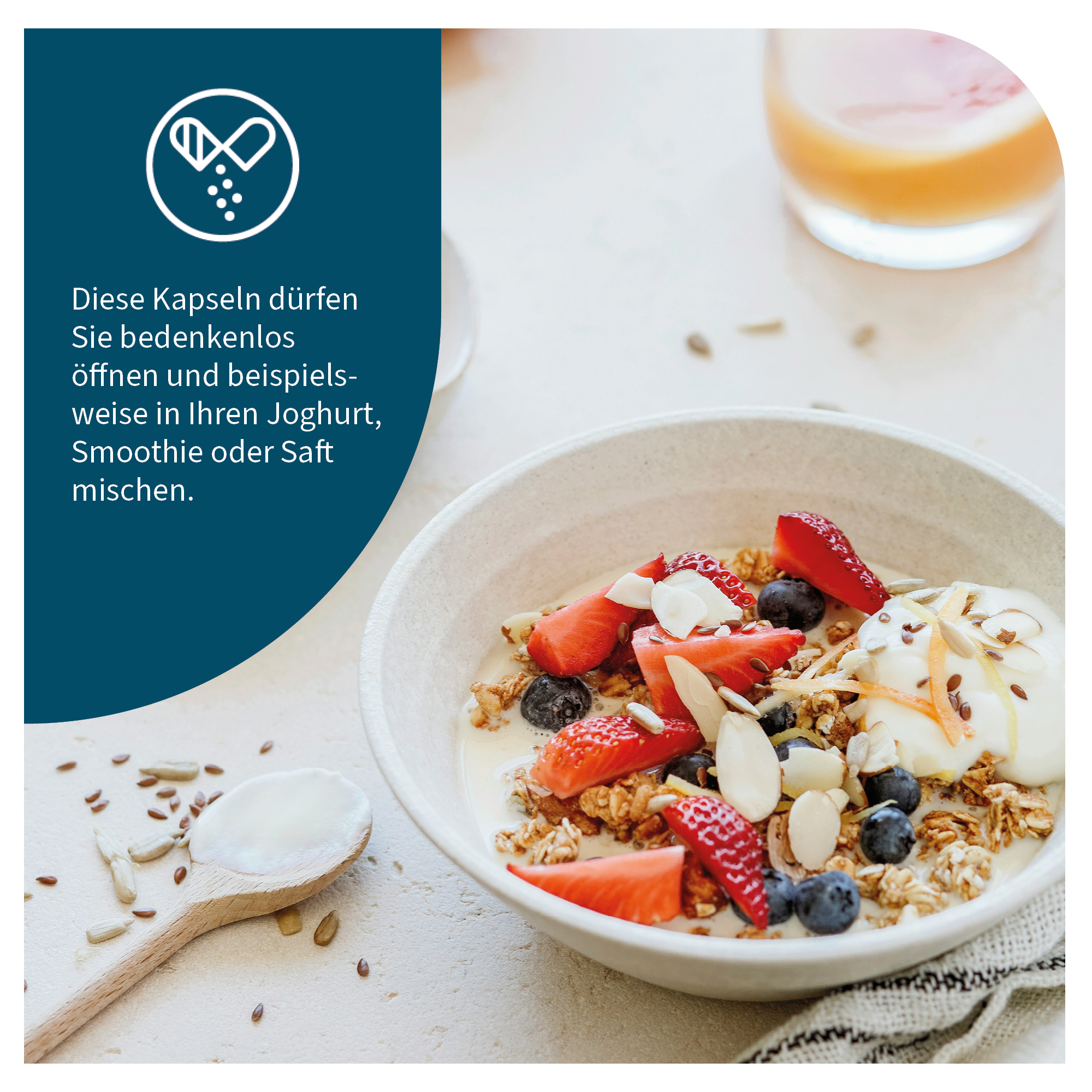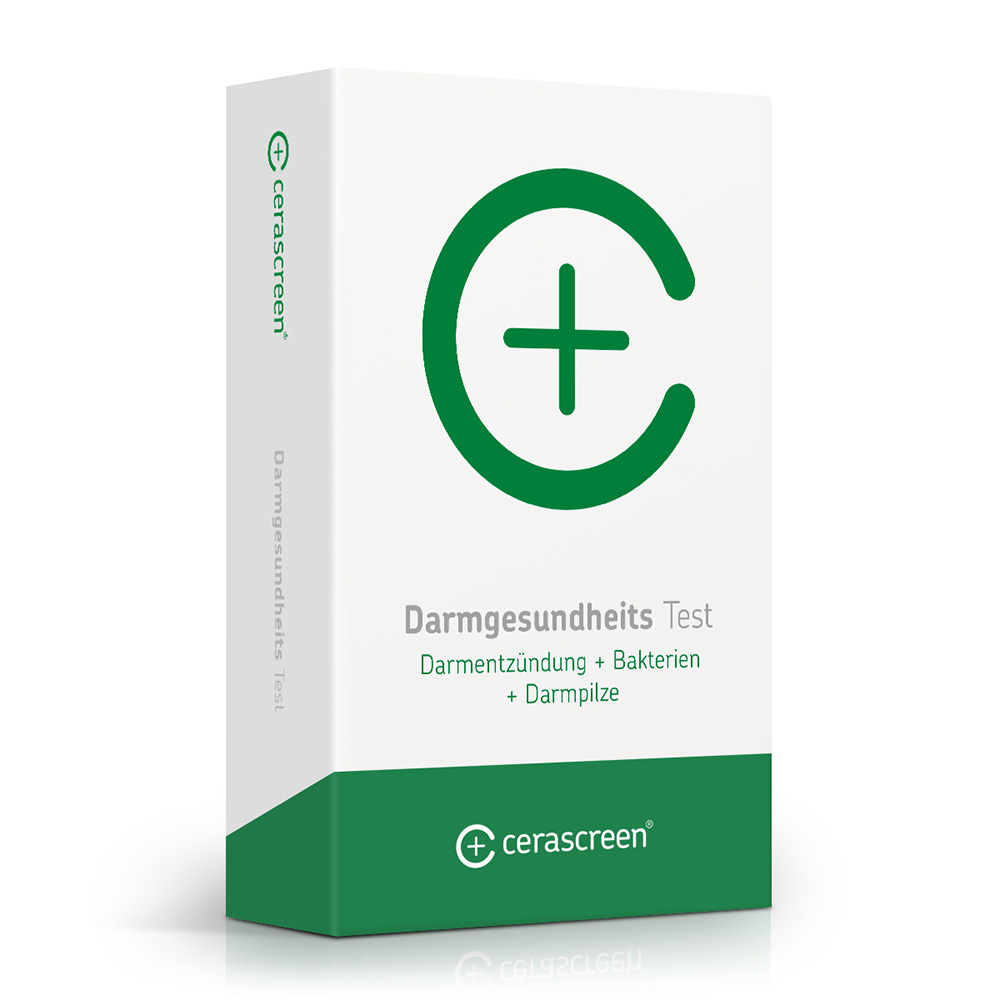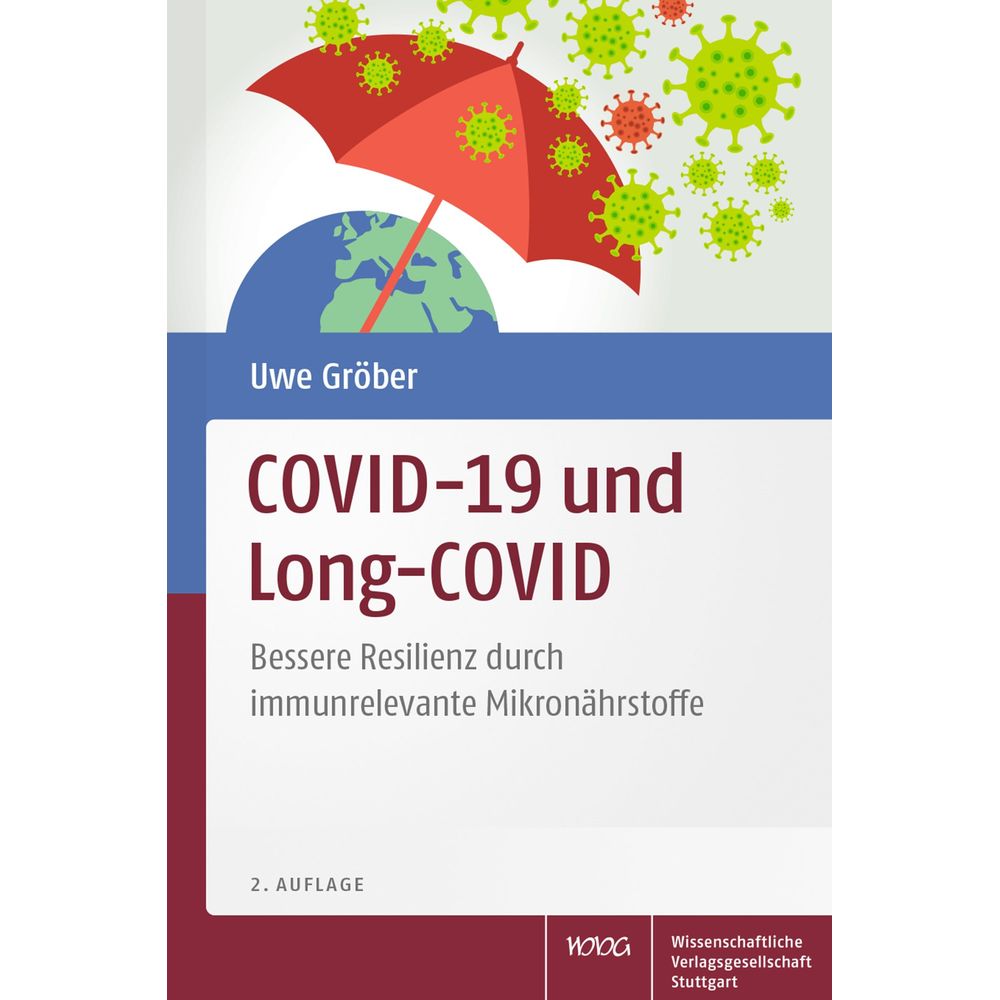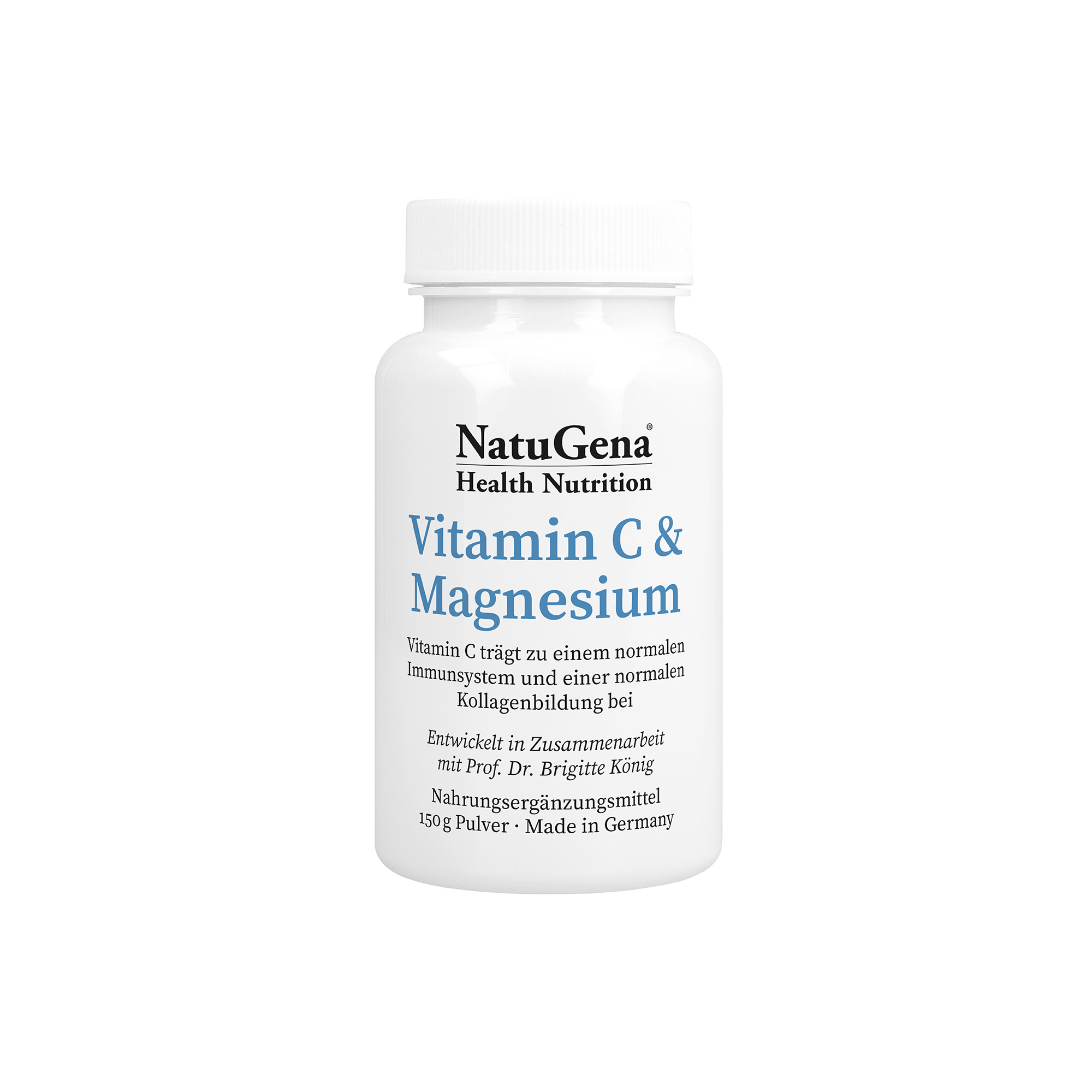Reactive oxygen species are free radicals that continuously stress the organism. If the concentration of free radicals is too high, oxidative stress can occur, which can damage cell structures. Free radicals extract electrons from their environment on a molecular level and thus destabilize the affected cell areas. Antioxidants can neutralize this process by giving the free radicals one of their electrons, thus protecting the cells from oxidative stress.
A distinction is made between endogenous and exogenous antioxidants. Endogenous antioxidants such as catalase, superoxide dismutase, and glutathione are produced by the organism itself. Exogenous antioxidants are taken in with food in the form of vitamin C, vitamin E and secondary plant substances (sulforaphane, quercetin, resveratrol, catechins, etc.).
Broccoli contains sulforaphane, and in broccoli sprouts the amount is even considerably higher. Quercetin is a component in onion, in NatuGena formula Japanese cordwood extract provides valuable quercetin, Japanese knotweed extract provides resveratrol, green tea provides the body with polyphenols, teein, catechin, theanine and bitter substances. Silymarin from milk thistle and curcuminoids from curcuma extract round out the formula.
In principle, however, free radicals are not harmful to the organism per se. In the right concentration, the body depends on oxidative stress for an intact immune system. The organism has a protective system that recognizes whether certain cell areas are burdened by too high a concentration of free radicals. This endogenous system is called the KEAP1-NRF2 signaling pathway.
Through this signaling pathway, the body is able to protect itself against oxidative stress by synthesizing antioxidants on its own (endogenously).
NRF2 is a protein in the cytoplasm of each cell, which is bound to the protein KEAP1 and thus kept inactive. If there are too many free radicals in the environment, NRF2 detaches from KEAP1 and moves out of the cytoplasm to the nucleus. There, NRF2 can activate genes responsible for the synthesis of endogenous antioxidants.
This signaling pathway can also be stimulated by certain dietary phytochemicals. First and foremost, the plant compound sulforaphane from broccoli should be mentioned. However, this is not an exogenous antioxidant effect of sulforaphane, but an endogenous activation. This broccoli component is a defense substance of the plant, which puts the cells under sensitive oxidative stress and thereby supports the body's own antioxidant defense system.


